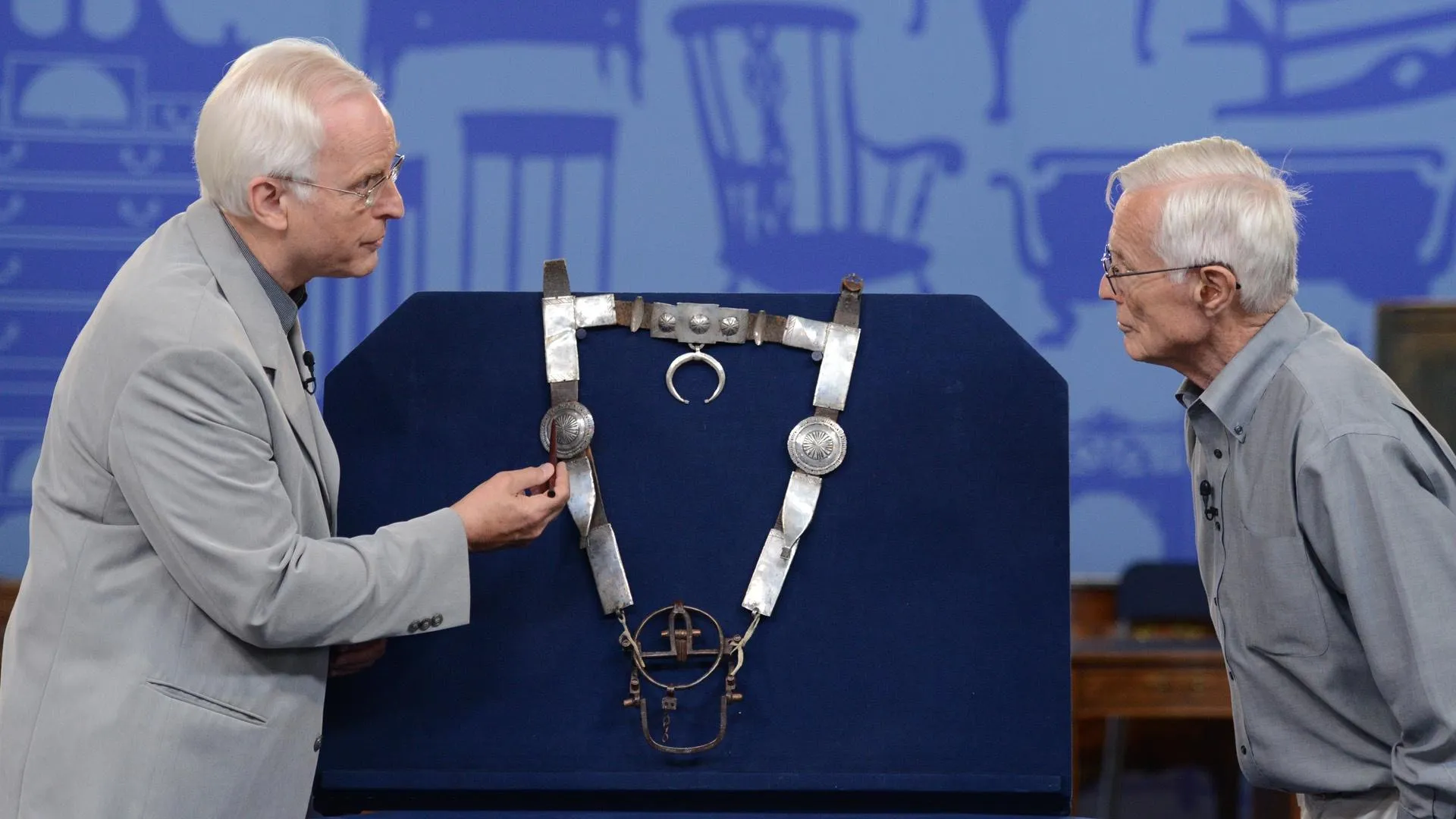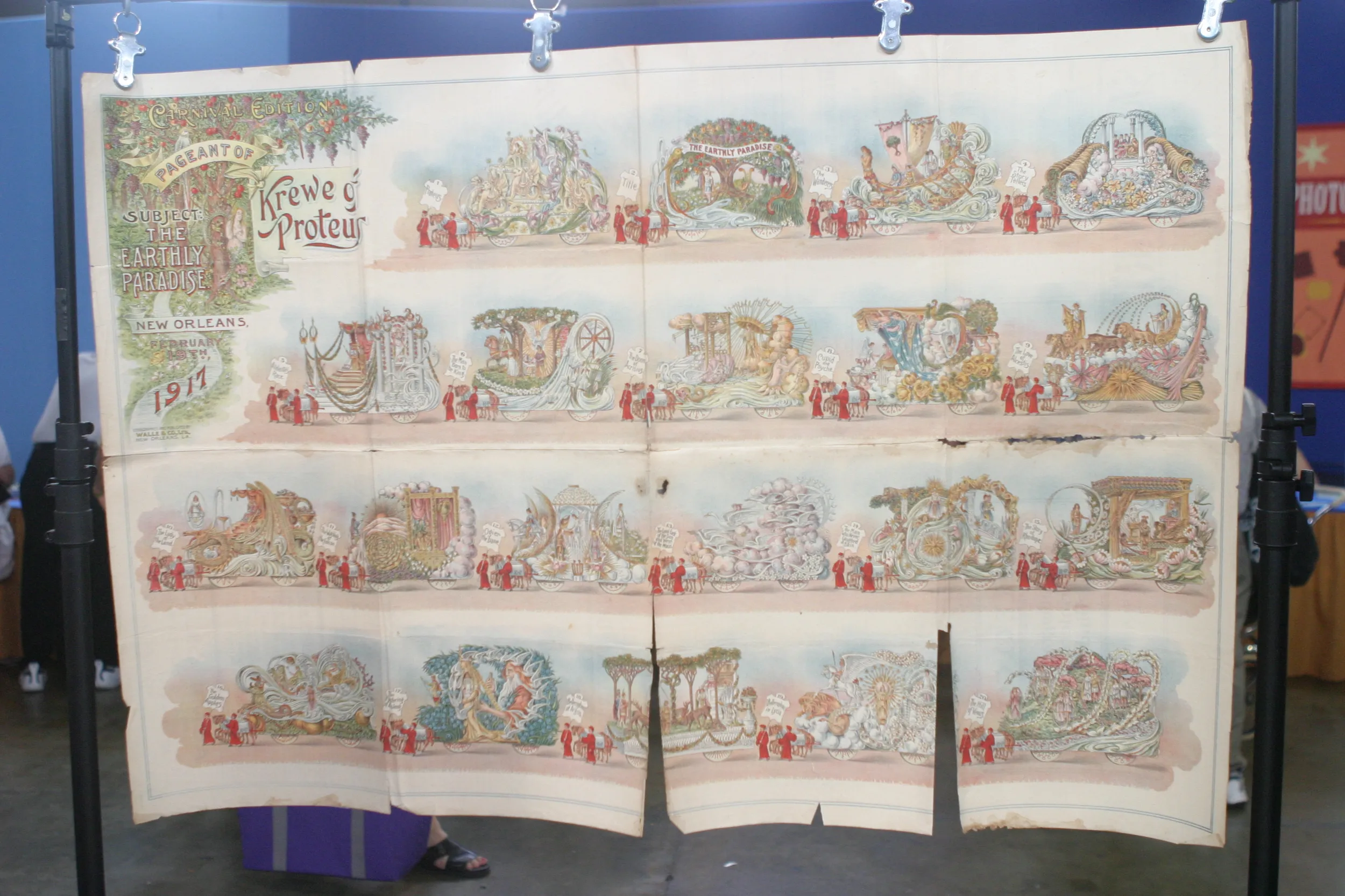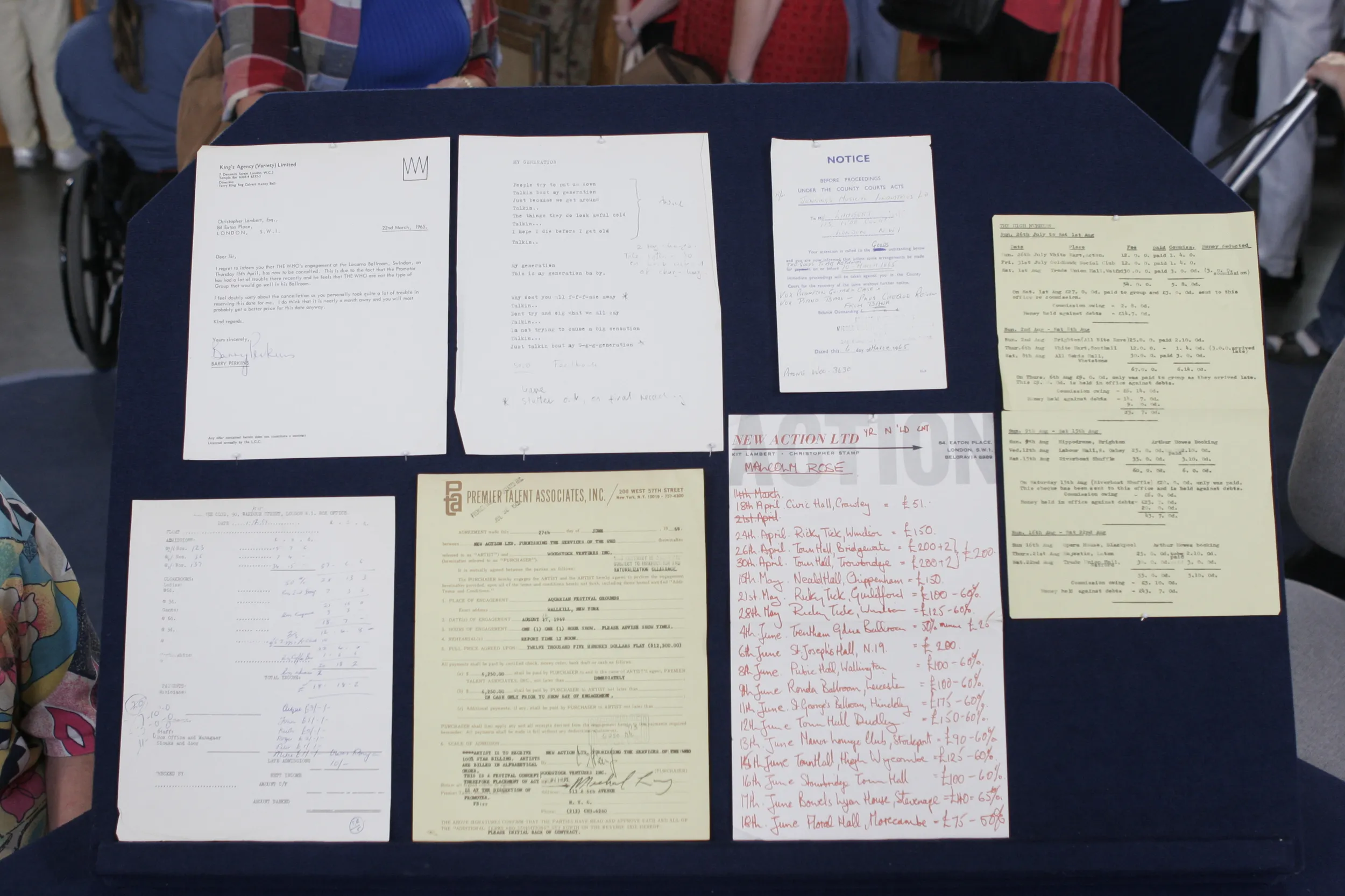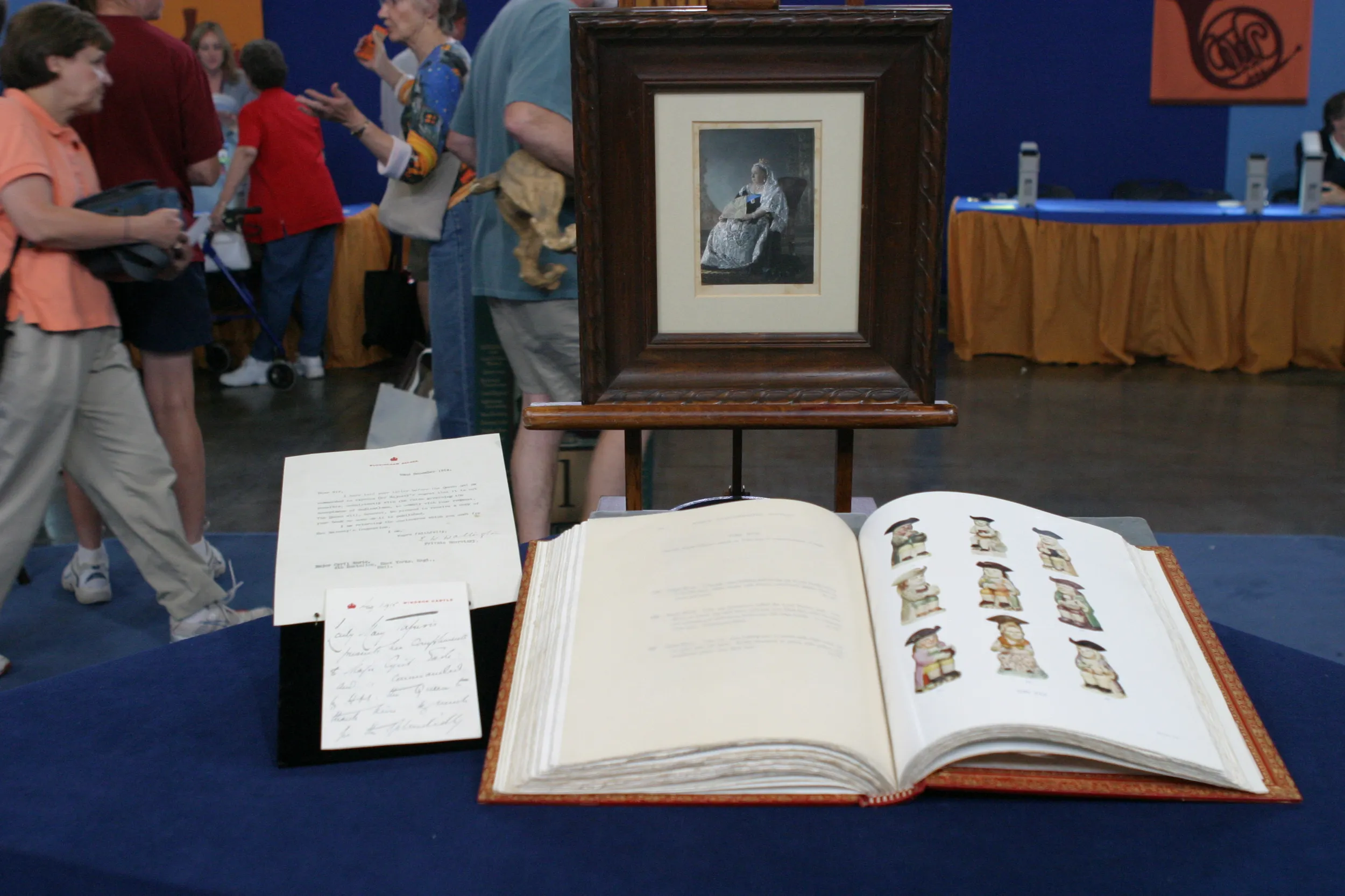GUEST: I was at a yard sale looking at books, and they had some poster tubes, and they were like... it was like "take your pick for five bucks," and I grabbed a tube and took it home.
APPRAISER: So you didn't even look what was in the tube?
GUEST: I had no idea what was in them until I got home and I was like... I started unrolling them and I was like, "Oh, my gosh, what are these?"
APPRAISER: How long ago was that yard sale when you bought these?
GUEST: I've had them in the closet, it's been about two years, maybe three. And I'm just amazed because I haven't had them completely rolled out before. They're pretty nice-looking posters. I particularly like this one here.
APPRAISER: These posters do advertise the 1964 Tokyo Olympics. And they were all designed by the same man: Yusaku Kamekura. It's easy for me to say that Kamekura was a titan of Japanese graphic design-- a titan. He was such an important figure within the world of Japanese graphic design that all of his colleagues nicknamed him "the Boss." He was the president of the Japanese Graphic Design Association, and after he died, they named an award in his honor. So he was really top of the heap. And when people look at these, they begin to see some of the genius that he brought. The first poster in the middle was actually designed in 1961, so it preceded the Games, trying to get the world ready for it. And when you look at it, it's kind of a simple image, and that's good. It's so simple looking, but it is such a complex design in which the rising sun is harmoniously balanced on top of the gold Olympic rings with the very neat and organized sans-serif typography below it. Now, the middle piece Kamekura designed by himself. The other three were photographed by a famous Japanese photographer, Osamu Hayasaki, and then Kamekura incorporated the photographs into the design. They're very dramatic photographs. They put a real punch and a real athleticism into the Olympic games. Any idea, given the five-dollar yard sale purchase price, what somebody who knew more about the graphic design history of these pieces might pay for them?
GUEST: You got me flummoxed on that. I mean, with the lead-in, $100 each, $500 each? Got me.
APPRAISER: I'm going to try to de-flummox you a little bit. Lest you think I've built them up too much, let me tell you that the piece in the center, according to the Olympic Committee, 100,000 were printed.
GUEST: That's a lot.
APPRAISER: That's a lot of posters. Similarly with the other posters, between 50,000 and 70,000 each were printed. But here's the thing: not that many of them have survived. These pieces do come up at auction, and when they come up at auction fairly regularly, they are estimated between $700 and $1,000 each.
GUEST: Wow.
APPRAISER: And generally sell within that range. Though I would add that one of these posters is not quite in as good condition. There's a tear. So I think that poster would be more in the $400 to $500 range. But together, the four, the set of posters at auction, an estimate of $2,500 to $3,500.
GUEST: Okay. (laughs) That's not bad. They're pretty, they're beautiful, you know?











